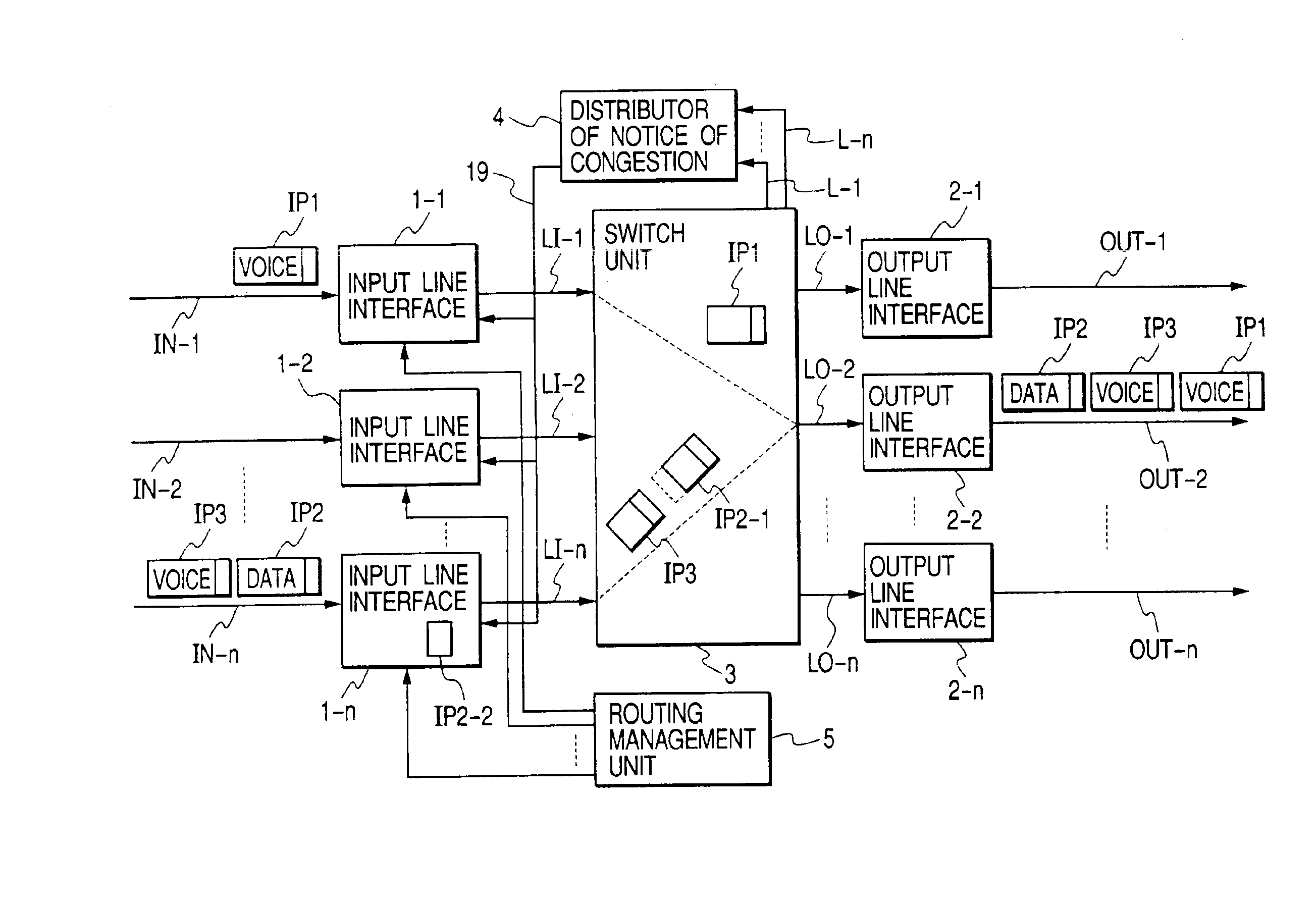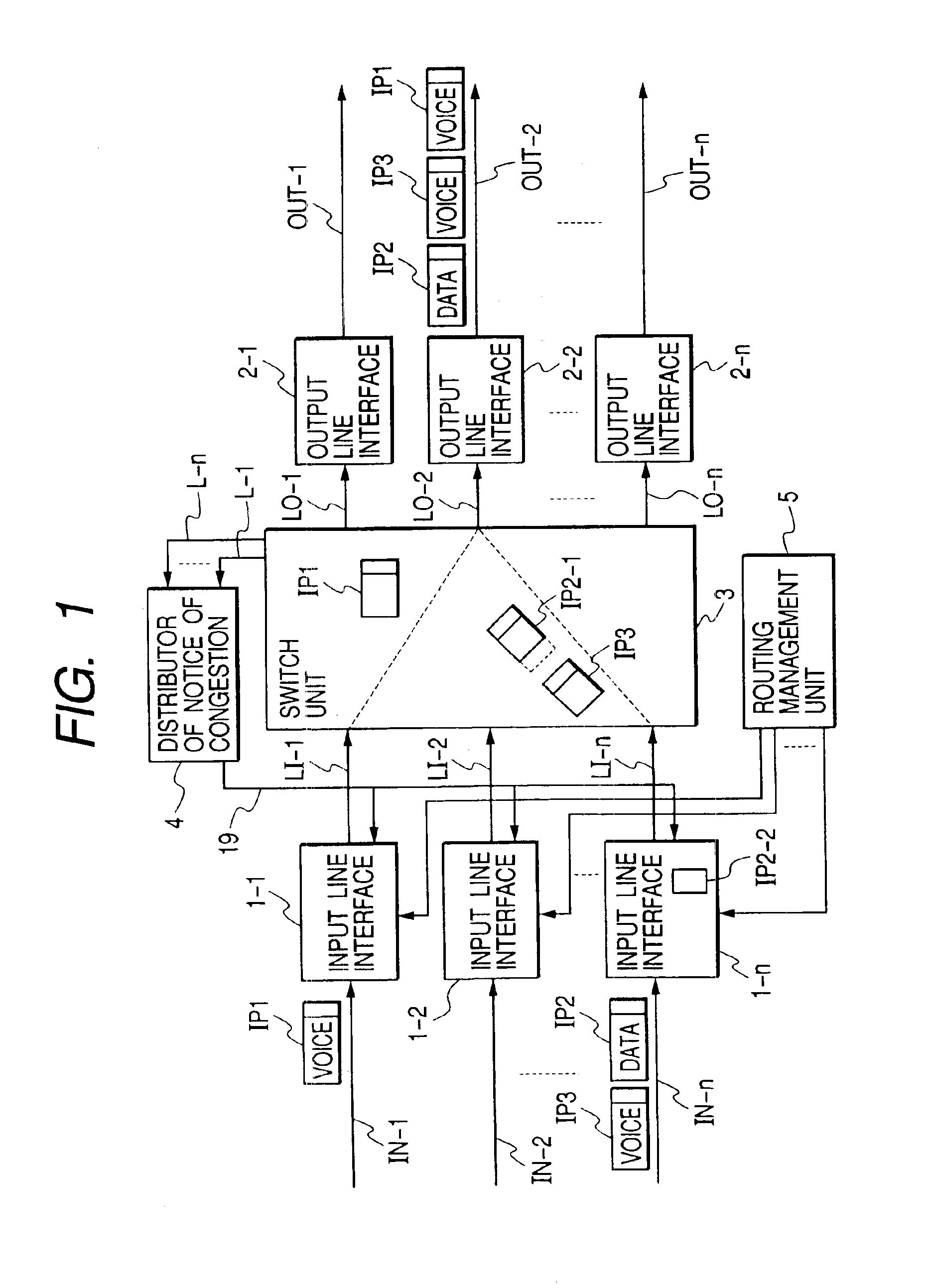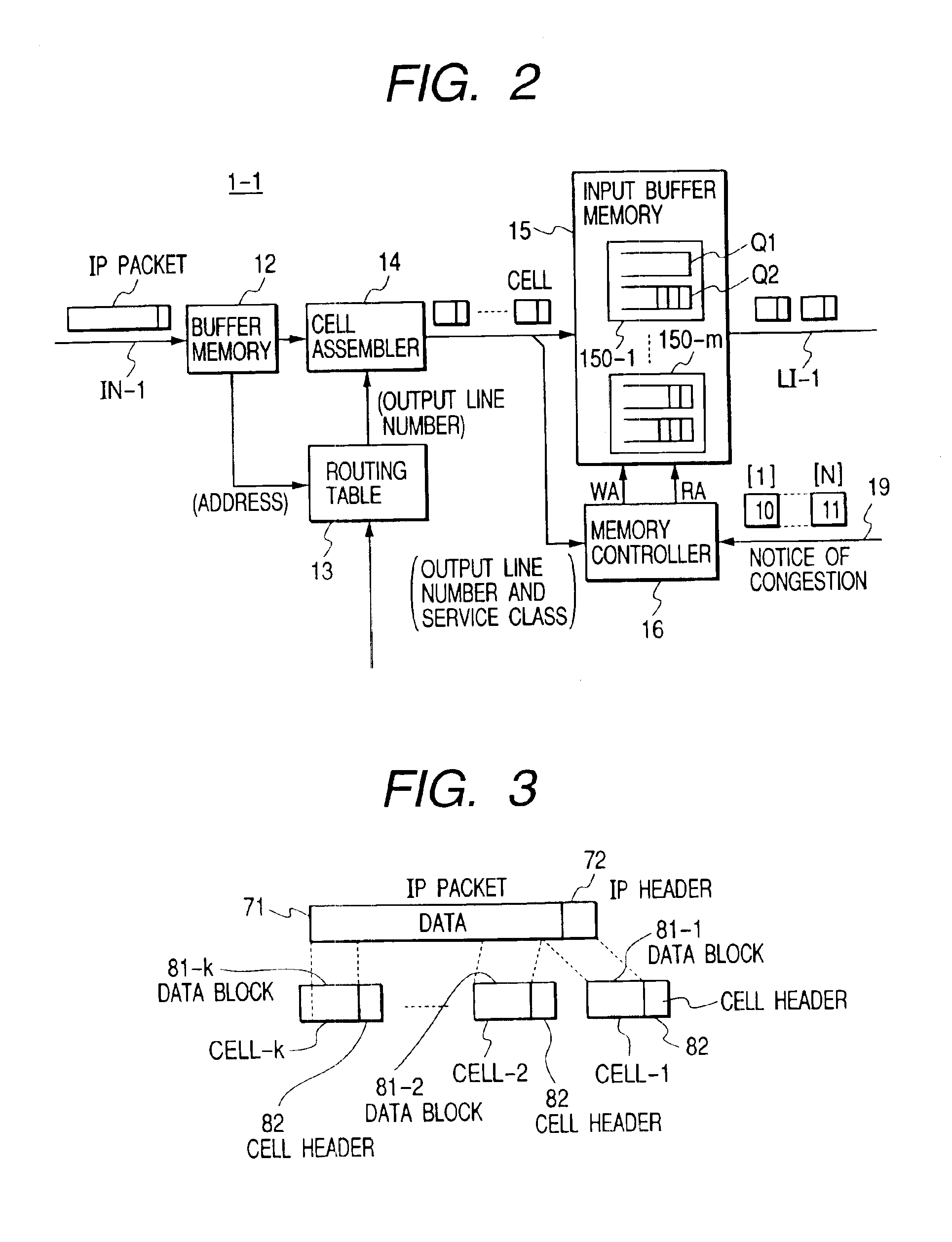Packet switch for switching variable length packets in the form of ATM cells
a packet switch and variable length technology, applied in the field of packet switches, can solve the problems of packets not being forwarded to the same output, packet delay time in message transfer, and inability to guarantee factors in communications performance, and achieve the effect of small delay time and simple qos (quality of service)
- Summary
- Abstract
- Description
- Claims
- Application Information
AI Technical Summary
Benefits of technology
Problems solved by technology
Method used
Image
Examples
first embodiment
[0044]FIG. 1 shows the packet switch of this invention.
[0045]A packet switch comprises a plurality of input line interfaces 1 (1—1 to 1-n) connected to input lines IN (IN-1 to IN-n) for converting the IP packet received from the input lines to one or more fixed length cells and sending the cells to switch input ports LI (LI-1 to LI-n); a switching unit 3 having a plurality of input ports LI-1 to LI-n and output ports LO-1 to LO-n and switching the input cells from the input ports to any one of the output ports specified by the routing information contained in each of the cell headers; a plurality of output line interfaces 2 (2-1 to 2-n) each connected to one of the switch output ports to restore the original IP packet from the cells received from the output port and send that IP packet to the output line OUT (OUT-1 to OUT-n) associated therewith; a congestion notifier unit (a distributor of notice of congestion) 4 to inform each input line interface 1 of the congestion status in the...
second embodiment
[0088]FIG. 9 shows the packet switch of this invention.
[0089]This embodiment employs a packet switch having no buffer memory to form cell queues as the switch unit 3A, and the congestion status is detected at each output line interface 2′(2′-1 to 2′-n) and informed to each input line interface 1 (1—1 to 1-n) via the congestion notifier 4. The same configuration as shown for the first embodiment in FIG. 2 can be adopted for each input line interface 1.
[0090]FIG. 10 shows an example of the configuration of the switching unit 3A in FIG. 9.
[0091]The switching unit 3A is of a crosspoint type comprising of a plurality of cell transfer controllers 33 (33-1 through 33-n) installed for each of the output ports LO-1 through LO-n. Each cell transfer controller 33 comprises a selector 331 connected to a plurality of input ports LI-1 through LI-n for selecting one of the input ports to pass an input cell from the selected input port to the output port, and a header analyzer 332 for analyzing the...
third embodiment
[0098]the packet switch of this invention is explained next.
[0099]FIG. 12 shows a communication network adaptable for use with the packet switch N1 (N1-1, N1-2) of this embodiment.
[0100]When for instance forwarding an IP packet generated from one of terminals (t) through (v) connected to an IP network 91 to another one of terminals (w) through (z) connected to an IP network 92 at the other end as shown in the FIG. 12, the IP packet is relayed through an intermediate network 90 comprising a plurality of nodes (packet switches) between the source IP network 91 and the destination IP network 92. In the intermediate network 90, if the aforementioned packet switch of this invention is applied a path including the nodes N1-1, N2, N1-2 for performing IP packet communication, transmission delays may become a problem because of the repetitive conversion of IP packets to ATM cells and vice versa at each node. However, if communication is performed between nodes with ATM cells such as in the p...
PUM
 Login to View More
Login to View More Abstract
Description
Claims
Application Information
 Login to View More
Login to View More - R&D
- Intellectual Property
- Life Sciences
- Materials
- Tech Scout
- Unparalleled Data Quality
- Higher Quality Content
- 60% Fewer Hallucinations
Browse by: Latest US Patents, China's latest patents, Technical Efficacy Thesaurus, Application Domain, Technology Topic, Popular Technical Reports.
© 2025 PatSnap. All rights reserved.Legal|Privacy policy|Modern Slavery Act Transparency Statement|Sitemap|About US| Contact US: help@patsnap.com



